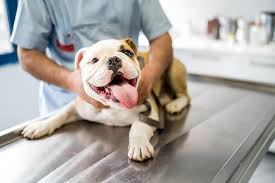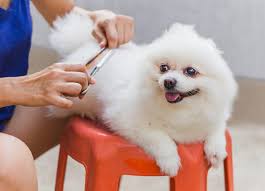Puppy care complete guide is essential for new pet owners eager to provide a healthy and happy life for their furry companions. Bringing a puppy into your home is an exciting and rewarding experience, but it comes with significant responsibilities.
Understanding the fundamental needs of a puppy is crucial to ensure their well-being and development. This guide will cover all aspects of puppy care, from choosing the right food to training, socialization, and health care.
Puppies are curious, energetic, and full of personality. They require proper nutrition, regular exercise, and social interaction to grow into well-adjusted adults. A balanced diet is vital for their physical development, as puppies have specific nutritional requirements that differ from those of adult dogs. Choosing high-quality puppy food that meets these needs is the first step in ensuring they grow strong and healthy.
Socialization is another critical aspect of puppy care. During the first few months of life, puppies are most receptive to new experiences, making this the perfect time to introduce them to various environments, people, and other animals. Proper socialization helps prevent behavioral issues later in life, such as aggression or anxiety. It also allows puppies to develop into friendly, confident dogs that can adapt to different situations.
Training is equally important and should start as soon as your puppy arrives home. Establishing a routine and setting boundaries early on will help your puppy understand what is expected of them. Positive reinforcement techniques, such as treats and praise, are effective ways to encourage good behavior and build a strong bond between you and your puppy. Basic commands like sit, stay, and come are essential skills that not only enhance your puppy’s obedience but also ensure their safety.
Regular veterinary care is essential for maintaining your puppy’s health. Vaccinations, parasite prevention, and routine check-ups are all necessary to protect your puppy from various diseases. Spaying or neutering your puppy is also an important consideration, as it can help prevent certain health issues and contribute to better behavior.
In addition to physical care, emotional support and companionship play a vital role in a puppy’s development. Puppies thrive on love and attention, so spending quality time with them is crucial. Engaging in playtime, grooming, and training sessions not only strengthens your bond but also keeps your puppy mentally stimulated and happy.
Understanding common health issues that affect puppies is important for any new dog owner. From gastrointestinal problems to skin allergies, being aware of potential health concerns can help you address issues early on. Recognizing the signs of illness and knowing when to consult your veterinarian will ensure your puppy remains healthy throughout their life.
As you embark on this journey of puppy care, it’s important to remember that patience and consistency are key. Each puppy is unique, and they will develop at their own pace. By providing a nurturing environment, establishing a routine, and meeting their physical and emotional needs, you can help your puppy grow into a well-behaved and happy adult dog.
Choosing the Right Puppy

Selecting the right puppy is crucial for a successful pet-owner relationship.
1. Consider Breed Characteristics: Different breeds have varying temperaments, energy levels, and grooming needs. Research breeds to find one that fits your lifestyle.
2. Assess Your Lifestyle: Think about your daily routine, living situation, and activity level. Some puppies require more exercise and socialization than others.
3. Visit Shelters and Breeders: Whether adopting from a shelter or purchasing from a breeder, meet the puppies in person. Observe their behavior and ensure they are healthy and socialized.
4. Ask Questions: Inquire about the puppy’s health history, vaccination status, and any potential genetic issues. Responsible breeders and shelters will provide this information.
Preparing Your Home for a Puppy
Before bringing your new puppy home, ensure your environment is safe and welcoming.
1. Puppy-Proof Your Space: Remove any hazards, such as electrical cords, toxic plants, and small objects that a puppy might swallow. Secure trash cans and store cleaning supplies out of reach.
2. Create a Designated Area: Set up a specific space for your puppy to relax and sleep. Use a crate or bed to create a cozy spot where they can feel secure.
3. Plan for Training: Decide on a training method and set boundaries for your puppy’s behavior. Consistency is key, so ensure all family members are on the same page.
4. Establish a Routine: Puppies thrive on routine. Set regular feeding, potty, and play times to help your puppy adjust to their new home.
Essential Supplies for Your Puppy
Having the right supplies on hand will make the transition easier for both you and your puppy.
1. Food and Water Bowls: Choose sturdy bowls that are easy to clean. Stainless steel or ceramic bowls are good options.
2. High-Quality Puppy Food: Select a nutritious puppy food that meets the dietary needs of your chosen breed. Consult your veterinarian for recommendations.
3. Crate: A crate provides a safe space for your puppy and aids in house training. Make sure it is appropriately sized for your puppy’s breed.
4. Leash and Collar: Get a comfortable collar and a sturdy leash for walks and training sessions. Consider an ID tag with your contact information.
5. Toys: Provide a variety of toys to keep your puppy entertained and help with teething. Opt for durable toys that are safe for your puppy’s age and size.
6. Grooming Supplies: Depending on your puppy’s breed, you may need brushes, nail clippers, and shampoo. Start grooming early to get your puppy accustomed to the process.
Read Also: 18 Medicinal Health Benefits Of Ligustrum lucidum (Glossy Privet)
Feeding Your Puppy: Nutrition Basics

Providing the right nutrition is crucial for your puppy’s growth and development.
1. Choose High-Quality Puppy Food: Select a high-quality commercial puppy food that meets the nutritional standards set by AAFCO (Association of American Feed Control Officials). Look for foods rich in protein, healthy fats, and essential vitamins and minerals.
2. Understand Portion Sizes: Follow the feeding guidelines provided on the dog food packaging, adjusting portions based on your puppy’s age, weight, and activity level. Puppies generally require more calories than adult dogs to support their rapid growth.
3. Establish a Feeding Schedule: Feed your puppy three to four small meals per day until they are about six months old. After that, you can transition to two meals a day. Consistency helps regulate their digestion.
4. Monitor Weight and Adjust as Needed: Regularly check your puppy’s weight and body condition. Consult your veterinarian for guidance on proper feeding and weight management.
Vaccinations and Health Checkups
Regular veterinary visits and vaccinations are vital for your puppy’s health.
1. Follow a Vaccination Schedule: Puppies need a series of vaccinations to protect them from common diseases, including parvovirus, distemper, and rabies. Start vaccinations around six to eight weeks of age, and follow your veterinarian’s recommended schedule.
2. Schedule Regular Health Checkups: Routine veterinary checkups allow your vet to monitor your puppy’s growth, administer vaccinations, and check for any health concerns. Aim for a checkup every 3-4 weeks until your puppy is about 16 weeks old.
3. Discuss Preventive Care: Talk to your veterinarian about preventive care measures, such as deworming and flea and tick control, to keep your puppy healthy.
4. Keep a Record of Vaccinations: Maintain a record of your puppy’s vaccinations and health checkups. This information will be helpful for future veterinary visits and when traveling with your dog.
Basic Training Techniques for Puppies
Training your puppy is essential for good behavior and a harmonious household.
1. Start with Basic Commands: Teach fundamental commands like “sit,” “stay,” “come,” and “down.” Use positive reinforcement techniques, such as treats and praise, to encourage desired behaviors.
2. Use Consistent Cues: Be consistent with your verbal and physical cues for each command. This helps your puppy understand what you expect from them.
3. Keep Training Sessions Short and Fun: Puppies have short attention spans, so keep training sessions to about 5-10 minutes. Make them engaging by using toys and rewards.
4. Be Patient and Positive: Training takes time and patience. Celebrate small successes and avoid punishment, which can lead to fear and anxiety.
Socialization: Importance and Techniques
Socialization helps puppies develop into well-adjusted adult dogs.
1. Introduce Your Puppy to Various Environments: Expose your puppy to different people, animals, and environments. This can include parks, busy streets, and different surfaces (grass, concrete, etc.).
2. Encourage Positive Interactions: Use treats and praise to encourage positive interactions with other dogs and people. Monitor your puppy’s body language to ensure they feel comfortable.
3. Attend Puppy Socialization Classes: Consider enrolling your puppy in a socialization class led by a professional trainer. These classes provide a controlled environment for puppies to interact with one another.
4. Continue Socialization Throughout Life: Socialization is an ongoing process. Continue exposing your dog to new experiences, environments, and people throughout their life to maintain their confidence.
Read Also: List of Diseases Ruminant Animals (Livestock) Get from Feeds and Water
Grooming Your Puppy: Tips and Tricks

Regular grooming keeps your puppy looking good and promotes good health.
1. Brush Your Puppy Regularly: Depending on the breed, brush your puppy’s coat regularly to remove loose hair and prevent mats. Short-haired breeds may require less frequent brushing compared to long-haired breeds.
2. Bathe as Needed: Puppies generally don’t need frequent baths. Bathing them every few months or when they get dirty is usually sufficient. Use a mild puppy shampoo to avoid skin irritation.
3. Trim Nails Regularly: Check your puppy’s nails regularly and trim them as needed to prevent overgrowth and discomfort. If you can hear their nails clicking on the floor, it’s time for a trim.
4. Clean Ears and Teeth: Regularly check and clean your puppy’s ears to prevent infections. Use a veterinarian-recommended ear cleaner. Additionally, brush your puppy’s teeth several times a week to maintain oral health.
Understanding Puppy Behavior
Understanding your puppy’s behavior helps you train and bond with them effectively.
1. Recognize Body Language: Pay attention to your puppy’s body language, such as tail position and ear posture, to understand their feelings. A wagging tail can indicate excitement, while a tucked tail may signify fear.
2. Socialization Needs: Puppies go through a critical socialization period between 3 to 14 weeks of age. Expose them to different environments, people, and animals to help them develop confidence and reduce fearfulness.
3. Play Behavior: Puppies learn through play. Provide them with toys and engage in interactive play to encourage positive behaviors and mental stimulation.
4. Barking and Whining: Understand that barking and whining can communicate different needs, such as excitement, boredom, or the need for attention. Respond appropriately to teach them how to express themselves.
Common Health Issues in Puppies
Being aware of common health issues helps you take timely action.
1. Parvovirus: This highly contagious virus can cause severe gastrointestinal issues in puppies. Vaccination is crucial to prevent this disease.
2. Kennel Cough: A contagious respiratory infection that can cause coughing and sneezing. Ensure your puppy is vaccinated, especially if they will be in contact with other dogs.
3. Worms: Puppies can be affected by various types of worms (roundworms, hookworms, etc.). Regular deworming as recommended by your veterinarian is important.
4. Ear Infections: Puppies with floppy ears are prone to ear infections. Regular ear cleaning and monitoring for signs of discomfort can help prevent this issue.
Creating a Safe and Happy Environment for Your Puppy
A safe and nurturing environment promotes your puppy’s well-being.
1. Puppy-Proof Your Home: Remove hazards like toxic plants, small objects, and cords that your puppy could chew on. Create a safe space for them to play and explore.
2. Provide a Comfortable Space: Set up a cozy area with a bed or crate where your puppy can feel secure. Make it a positive space for rest and relaxation.
3. Engage with Interactive Toys: Provide a variety of toys that stimulate your puppy mentally and physically. This can help prevent boredom and destructive behavior.
4. Establish a Routine: Puppies thrive on routine. Set consistent feeding, grooming, and playtimes to help your puppy feel secure and understand what to expect.
Do you have any questions, suggestions, or contributions? If so, please feel free to use the comment box below to share your thoughts. We also encourage you to kindly share this information with others who might benefit from it. Since we can’t reach everyone at once, we truly appreciate your help in spreading the word. Thank you so much for your support and for sharing!
Read Also: Potato Farming Guide – 7 Tips to Grow Sacks Full of Potatoes
Frequently Asked Questions
We will update this section soon.

